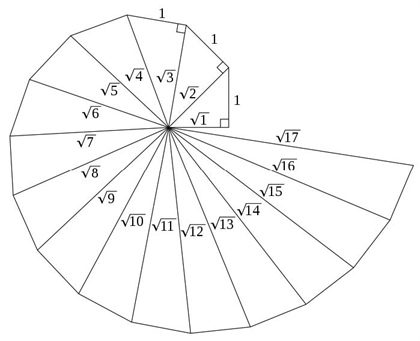Inspiration for a Devoted Wordsmith
BOOK REVIEW: Origins of Mathematical Words: A Comprehensive Dictionary of Latin, Greek, and Arabic Roots. By Anthony Lo Bello, Johns Hopkins University Press, 2013, 368 pages, $49.95.
Once in a blue moon, the U.S. mail brings a book that is a great pleasure for me to review. Anthony Lo Bello of Allegheny College has written such a work. I am an old-time wordsmith: The bookcase next to my bed contains a half dozen dictionaries and concordances in five languages. In my living room I have the whole Compact Edition of the OED in microtype: two volumes, boxed, complete with a magnifying glass. For a few coins, as an act of pious admiration, I visited lexicographer Samuel Johnson’s house in London and was allowed to flip (lightly) a few pages of his famous 1755 Dictionary. And I wish I owned a copy of C.T. Onions’s English Etymology. Thus, Lo Bello’s Origins was meat and potatoes for me.

The key mathematical words in Lo Bello’s book are listed alphabetically from “a-” to “zero.” Browsing at random, I learned the origins of mantissa, equiangular, interpolate, sigma-field, contragredient, scalene, homoscedasticity. The number six hundred sixty-six, famous from the Apocalypse in the Book of Revelation, makes a cameo appearance. Some terms, such as extouch triangle and approximoscope, were absolutely new to me. All in all, I estimate that the book provides genealogies for more than 1500 words.
The entries run from one-line explanations, as in “The F-Distribution of mathematical statistics is due to Snedecor [1881–1974],” to an extensive Wikipedia-type lecture on the entry “Cartesian,” which runs to six pages and beats out “Euclid” by four pages. Among other things, I learned that the Empress Elizabeth Petrovna of Russia owned porcelain plates decorated with equiangular spirals in gold and magenta.
A book of this quality carries the possibility of a “vergroesserte und verbesserte Auflage,” an enlarged and improved edition (a German publisher is reputed to have put out such a translation of Shakespeare). I suggest therefore that the overlooked word syzygy be added (although this single addition would not be grounds for a new edition). But assuming that computer science is a subset of mathematics, what about adding cyber,* byte, virus, avatar, pixel, crash, and a further dozen such words?
The book is larded with quotations––from Plutarch, Bertrand Russell, Plato, Rousseau, Euler, Herodotus, John Aubrey, Abelard of Bath, Voltaire, Dean Milman, Paul Halmos, and other worthies. Incidentally, Aubrey’s Brief Lives (1680–1693) contains a great and entertaining collection of odd bits about mathematicians and scientists. Lo Bello has also included a few letters he has received, from, for example, W.E. Deming of NYU, on the teaching of mathematics, and J. Freund, on the uses of plot diagrams.
I’ve thought of two personal items that might be included. If the author would care to join me in Providence for a glass of Narragansett ale, I would relate to him the deep and extensive origins of two phrases for which I’ve blown the kazoo for some years: Quadratwurzel Schnecke (the square root snail or spiral, or a sweet roll: your choice) and the Schwartz function (q.v. Carus Mathematical Monographs, No. 17).
Olé, Anthony Lo Bello! Good Job! Your book is full of much more interesting material than I can describe and stuff into my allotted space.
*See my review in SIAM News, Vol. 38, No. 5, June 2005, for the Wiener story.
About the Author
Philip J. Davis
Professor, Brown University
Philip J. Davis, professor emeritus of applied mathematics at Brown University, is an independent writer, scholar, and lecturer. He lives in Providence, Rhode Island and can be reached at philip_davis@ brown.edu.
Stay Up-to-Date with Email Alerts
Sign up for our monthly newsletter and emails about other topics of your choosing.



